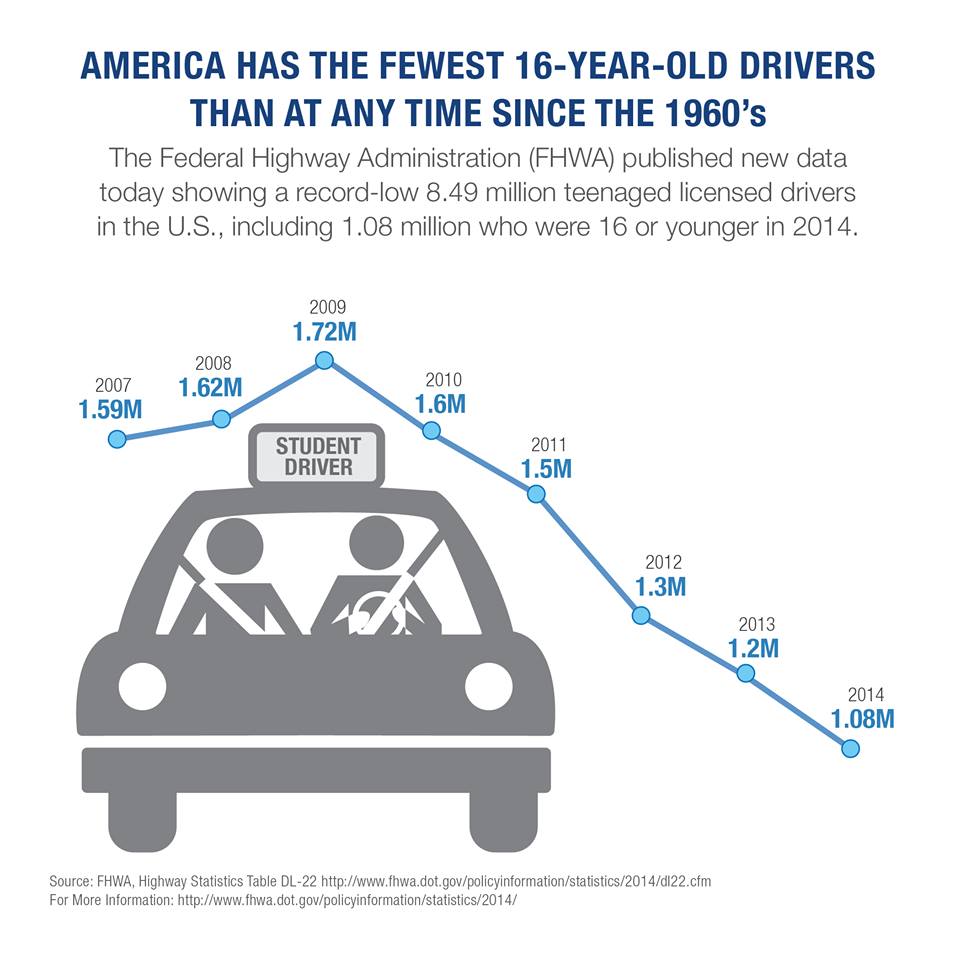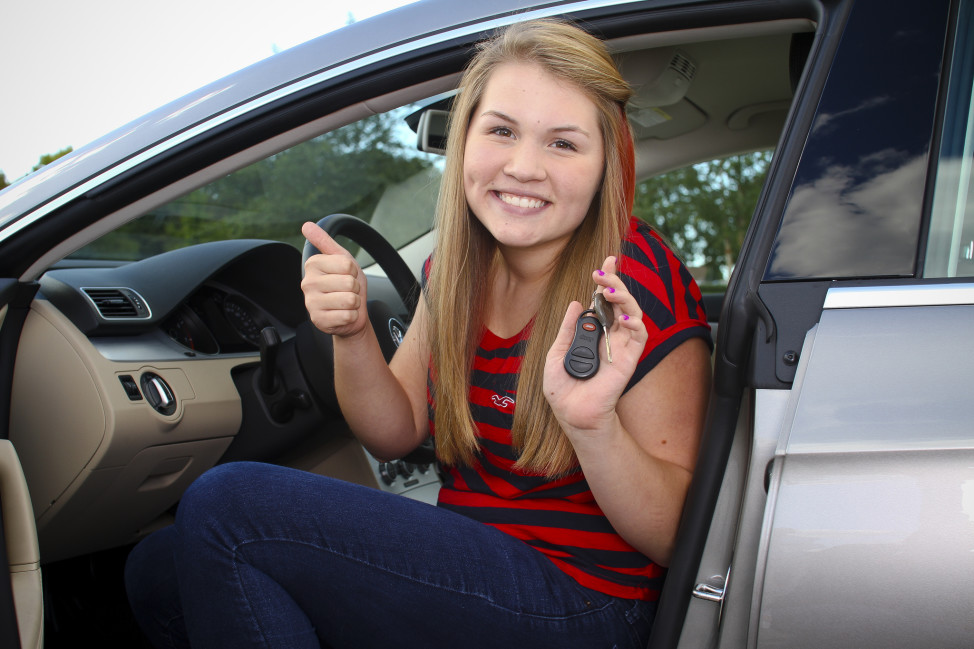U.S. teenagers aren’t racing out the door to get their driver’s license anymore.
The number of teenaged drivers has hit a record low, according to the Federal Highway Administration, which reports America now has the fewest 16-year-old drivers than at any other time since the 1960s.
Of the 8.5 million people — aged 19 and younger — who had a driver’s license in 2014, just over one million were aged 16 and younger.
That’s quite a switch from the time when getting a driver’s license was a significant milestone in the life of an American teenager, usually acquired as soon as possible after one’s 16th birthday. Obtaining a driver’s license was a milestone moment, a rite of passage that foreshadowed impending adulthood and represented a new freedom brought on by being able to transport yourself — and your friends — rather than relying on Mom or Dad.

Graphic: Federal Highway Administration
Overall, driving has declined nationally in the United States, after steadily increasing since World War II. To the generations of Americans directly after the war, cars — along with home ownership — were a symbol of prosperity. By 2011, though, Americans were driving 6 percent fewer miles per year, on average, than in 2004, according to a 2012 report.
And it’s young people who are driving this trend. Between 2001 to 2009, the average number of miles driven by people between the ages of 16 and 34 dropped 23 percent.
Technology could be helping to steer this new course for young Americans. After all, why bother leaving the house to see your friends when you can socialize online?
“Communications technology, which provides young people with new social networking and recreational possibilities, has become a substitute for some car trips,” wrote the authors of the 2012 report, Transportation and the New Generation.
Today’s younger people are also drawn to living in walk-able communities with public transportation options that are close by. Technology-driven online transportation networks, like Uber and Lyft, also make it easier to get around.
American transportation policies are based on the assumption that the number of drivers on U.S. roads will continue to climb, as it had in the 60 years after World War II. However, with more young people hitching a ride on the information highway, a detour in American transportation policy might be in the offing.
More About America
Here’s a List of America’s Richest & Poorest Presidents
Newspaper Ads Show Freed Slaves Desperate Search for Relatives
Most Prestigious US Jobs Have in Common…and It’s Not Money
American Majority Disagrees With Trump on Immigrants
More People Move to This US City & State Than Anywhere Else
























This trend in the declining number of teen drivers is not surprising given the income inequality in the US that makes car ownership unaffordable for many people, teens included.
Hopefully this trend will continue so that the expansion and development of public transportation is accelerated not only in metro areas but across the US.
The article doesn’t mention the rather strict new laws that slow down the process of getting permits and licenses. Often the teen must have formal driver’s ed before he / she can get the permit, or the age requirement is higher. There are also curfew-type laws limiting the hours a teen can drive, and even laws that restrict who can ride with a new teen driver. The article should have mentioned these laws – – they are fairly common now.